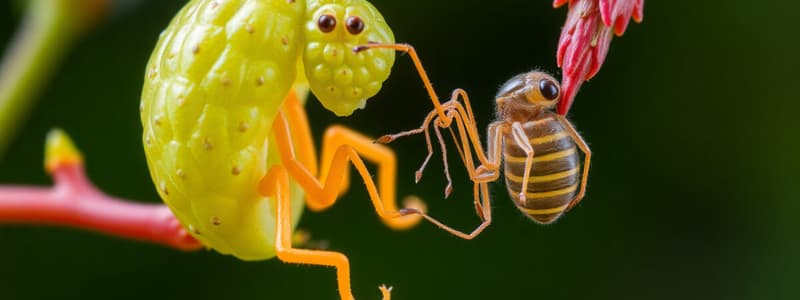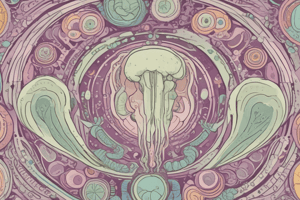Podcast
Questions and Answers
What is reproduction?
What is reproduction?
The ability of living organisms to produce offspring of their own kind.
Which of the following best describes asexual reproduction?
Which of the following best describes asexual reproduction?
- Involves a single organism producing offspring without gametes (correct)
- Involves the formation of gametes
- Common in higher plants
- Requires the fusion of male and female gametes
What is the primary method of reproduction in most animals and higher plants?
What is the primary method of reproduction in most animals and higher plants?
- Budding
- Asexual reproduction
- Gemmule formation
- Sexual reproduction (correct)
What is a gemmule?
What is a gemmule?
Gemmules are formed by the fusion of gametes.
Gemmules are formed by the fusion of gametes.
What are the main events in the process of reproduction in humans?
What are the main events in the process of reproduction in humans?
What role do archaeocytes play in gemmules?
What role do archaeocytes play in gemmules?
The protective covering of a gemmule is made up of ______.
The protective covering of a gemmule is made up of ______.
Which are factors responsible for rapid rise of population in India?
Which are factors responsible for rapid rise of population in India?
Flashcards are hidden until you start studying
Study Notes
Reproduction
- Reproduction is the ability of living organisms to produce offspring of their own kind.
- There are two main types of reproduction: asexual and sexual reproduction.
- Asexual reproduction involves the production of an offspring from a single organism without the formation of gametes. This is common in bacteria, protists, lower plants, and lower animals.
- Sexual reproduction involves the production of offspring by the formation and subsequent fusion of gametes. The male and female gametes unite to form a zygote which develops into a mature organism. This is common in most animals and higher plants.
Asexual Reproduction in Animals
- One example of asexual reproduction in animals is gemmule formation in sponges (Phylum Porifera).
- Gemmules are reproductive bodies containing an inner mass of undifferentiated cells called archaeocytes.
- These cells are surrounded by a resistant covering that protects them, made up of chitin and sometimes strengthened by spicules.
- The gemmule contains a small outlet called the micropyle.
Studying That Suits You
Use AI to generate personalized quizzes and flashcards to suit your learning preferences.




